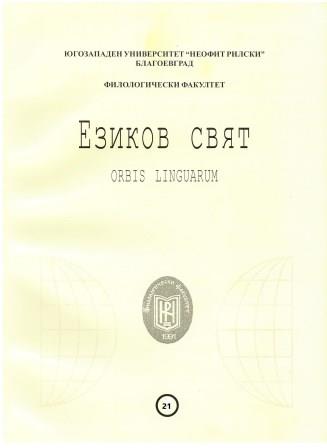CHASIDSKÉ VPLYVY V MAĎARSKEJ LITERATÚRE PO ROKU 1989
HASIDIC INFLUENCES IN HUNGARIAN LITERATURE AFTER 1989
Author(s): Pavol SzázSubject(s): Language and Literature Studies, Studies of Literature, Hungarian Literature, Philology
Published by: ЮГОЗАПАДЕН УНИВЕРСИТЕТ »НЕОФИТ РИЛСКИ«
Keywords: Contemporary Hungarian literature; Hasidism; Hasidic stories; reception; holocaust; magical realism; bricolage; cultural hybridisation
Summary/Abstract: The present study is an overview of the reception of literary Hasidism and its impact on Hungarian literature after 1989. Even at the end of the 1980s, traces of the anamnesis of the Jewish and Hasidic heritage of rural Eastern Hungary can be discerned in literature and public discourse. In fact, we can speak of the reception of literary Hasidism after the end of the fall of the regime and the tabuization of Jewish topics. Indeed, publishing the Hungarian translation of Martin Buber’s (1995) and Jiří Langer’s (2000) collection of Hasidic stories has influenced several works of fiction. Géza Röhrig’s prose poetics of his “imaginary Hasidic stories” resemble those of the magical realism, with their traditional mixture of imitation and imaginary elements. Langer and other Hasidic story collections inspired some dramatic works in the years following the millennium, notably the plays of Péter Kárpáti, Martin Boross and Szilárd Borbély. Szilárd Borbély’s case is special for our study, as he incorporates Hasidic motifs and reminiscences in several of his works, but mixes them with Christian elements, creating a specific, culturally hybrid bricolage-poetics.
Journal: Езиков свят - Orbis Linguarum
- Issue Year: 21/2023
- Issue No: 3
- Page Range: 209-217
- Page Count: 9
- Language: Slovak

